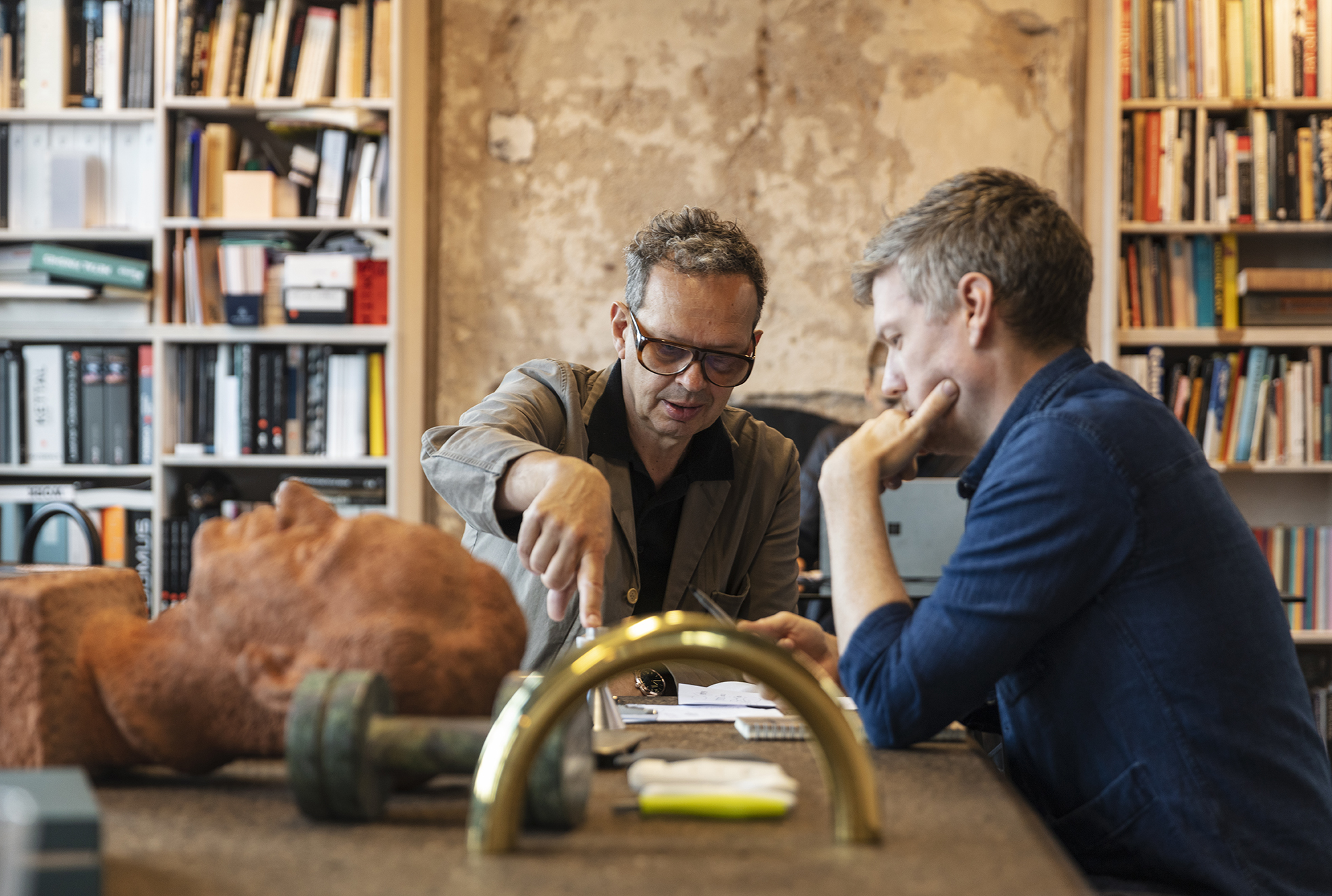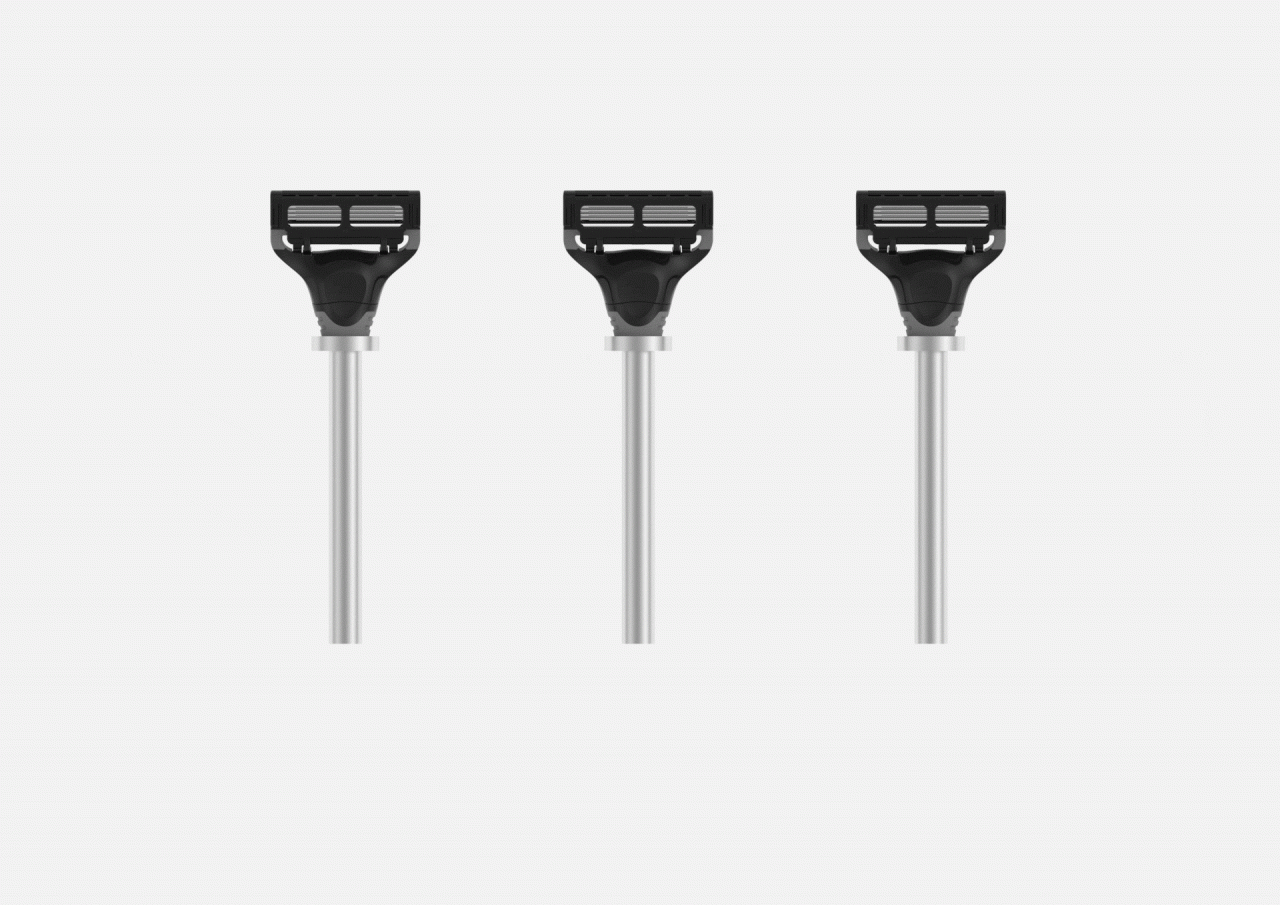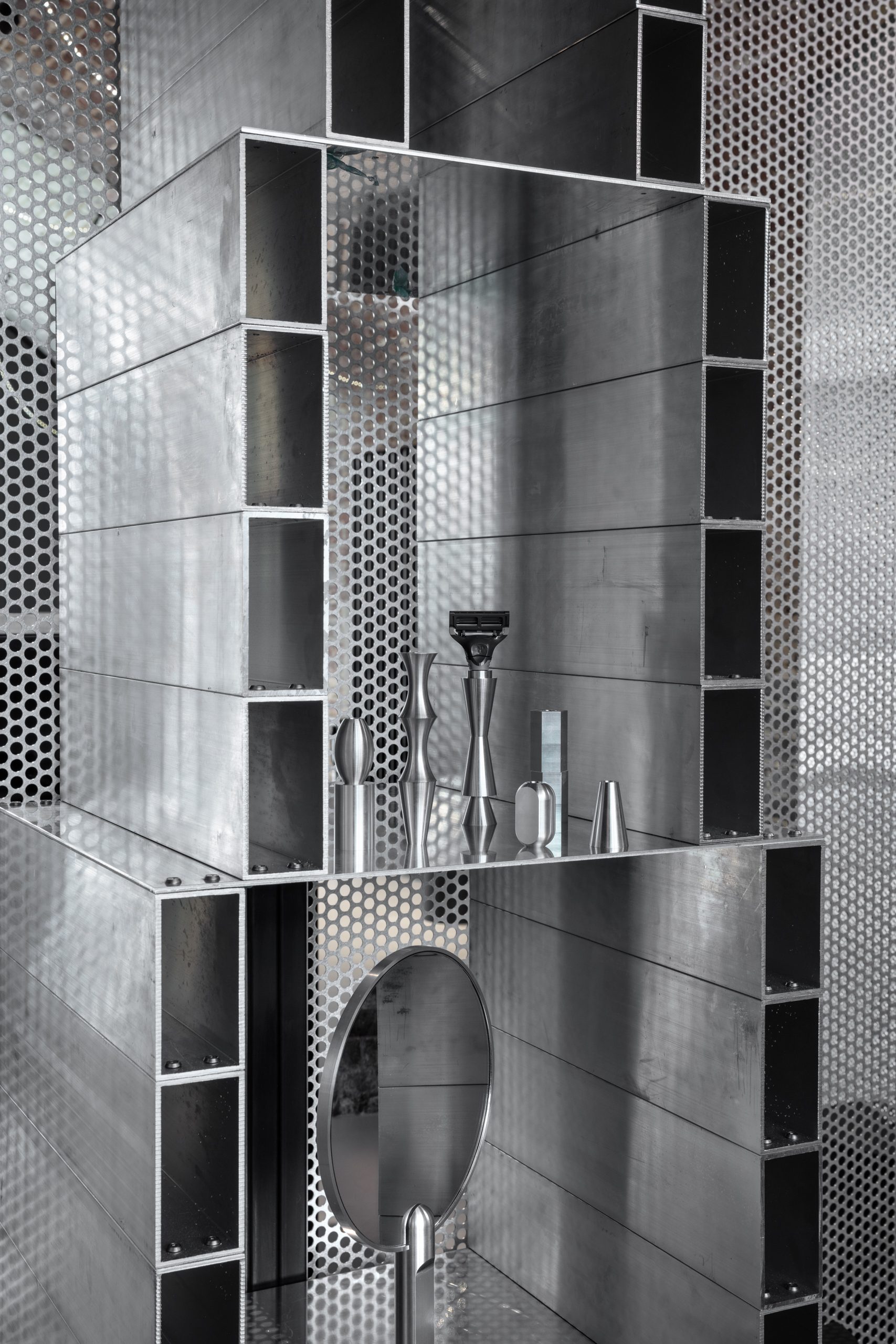Since its inception seven years ago, men’s personal care start-up Harry’s has capitalized on the potential and added-value of design. Ensuring that its ever-expanding product range of razors, creams, and accessories meet the highest material standards and brand-image continuity, the rapidly growing New York-based company puts particular emphasis on maintaining a sizable product design and engineering team. Recently, Harry’s has set out to make this key aspect of its business more apparent to an external audience.
Joining a number of design world-facing initiatives, the company teamed up with renowned British talent Tom Dixon to mount the barbershop-inspired Razor Bar installation during this month’s London Design Festival. In addition, the fruitful partnership spawned a new modular grooming product line. AN Interior’s associate editor Adrian Madlener spoke to Harry’s Vice President of Design Scott Newlin about the project and the brand’s design-led vision.

AN Interior: Design has always played an important role at Harry’s but it seems that recently there’s been a push to make that more evident; to engage with the field beyond just product development.
Scott Newlin: There’s a lifecycle to a brand and especially a start-up. When you’re new it’s all about letting the world know that you’re around; that your disruptive and cool. After that, it becomes about letting people know that you’re growing and where your products can be found. This ends up being the main focus of your communication strategy for a few years. In the beginning, the story often centers around the company’s founders but all the while, your building a brand and making sure it reflects the values you’re aiming for. For us, design has been relevant from day one and now that Harry’s is more established, we’re able to tell that story.

AN: As part of communicating that narrative, you’ve embarked on a few different initiatives including a two-part collaboration with Tom Dixon: an installation and one-off product collection. How did this collaboration come about?
SN: We’d been toying around with the idea of doing something at London Design Festival for a few years, particularly because of the number of well-known talents that call the city home and who might serve as strong partners. In selecting Tom Dixon, we were able to tick off a few boxes. The fact that he’s established a large presence in London, that he has international recognition, and that we admire his aesthetic were all important factors.
Beyond that, the fact that Tom Dixon and his studio pay close attention to manufacturing processes and maintains a close connection to nearby producers was also a major draw. This “boutique” approach allows him to go to a craftsperson right outside of London and ask them to produce a limited run of 10 pieces. Dixon and his team are able to see a process through from start to finish and to experiment along the way. What material do you make it out of? Who makes it? Where is it made?
When entering Dixon’s complex, you can often find him blow molding this or resin-casting that. Harry’s is similar in the way that we also pay close attention to our manufacturing and own the factory that produces our blades. In looking to develop a custom range of modular razor handles, this collaboration made complete sense.


AN: Describe the concept behind the barbershop-inspired Razor Bar.
SN: Dixon came to us with the idea of creating some type of spatial presentation at his complex to showcase the new products. We thought that the classic British barbershop would be a great source of inspiration for an installation that would be both visually appealing and interactive. Part of that concept was also the idea of offering barber services: cuts, shaves, etc. During London Design Festival, most people run around town frantically trying to see as much as they can and so to offer people the possibility of slowing down to taking care of themselves seemed like a good idea.
The look and the feel, the materials, and lighting of the interior were all carefully considered as to evoke this timeless reference. We were able to balance the historical aesthetic of the building with Dixon’s trademark use of iridescent materials and geometric forms. While there was a site-specific barber chair and mirror toward the back of the space, a larger central table displayed the various lego-like components of the custom-designed razor handles. Visitors could pick and choose various elements to create their own iterations. Dixon also created a full grooming including a mirror, brush, and bowl.
